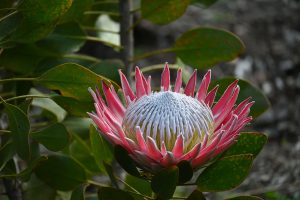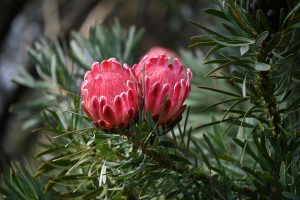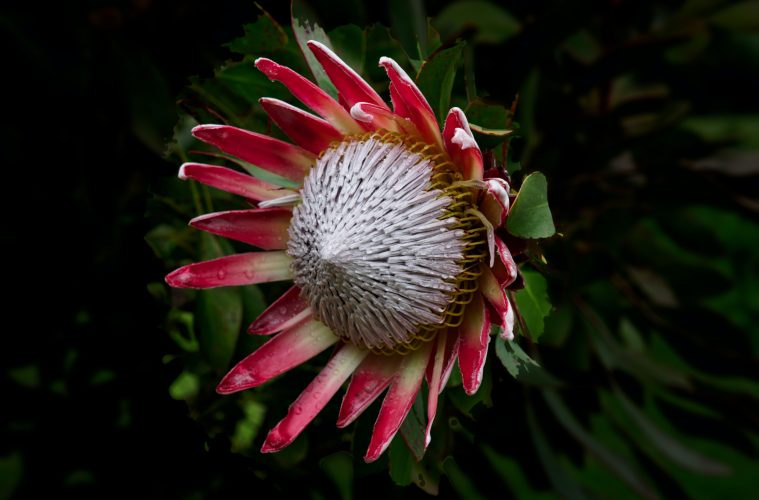The Protea is one of the most fascinating plants on earth and, of course, South Africa’s national flower. These incredibly beautiful fynbos plants attract various birds and insects like sunbirds and bees with their rich, sweet nectar. Proteas are scattered along the mountain ranges of South Africa, popping up in all their glory in different areas, from the Drakensberg to Table Mountain.
Ancient roots
The Protea’s lineage dates back a staggering 300 million years, making it one of the oldest flowering plants on Earth. Its name pays homage to the Greek god Proteus, known for his ability to change shape – a nod to the Protea’s diverse array of shapes and sizes.
Global ambassador
Indigenous to South Africa, the Protea has become a symbol of the country and is fondly referred to as the “King Protea” due to its regal appearance. Beyond South Africa, Proteas have found homes in regions like Australia and California, thanks to their adaptability to various climates.
Breathtaking variety
Proteas come in a vast range of forms and colours. From the spiky petals of the Pincushion Protea (Leucospermum) to the flamboyant blooms of the Pink Mink Protea (Protea neriifolia), there’s a Protea for every garden style and personality.

Unsplash
Ecological value
These magnificent plants play a crucial role in their ecosystems. Proteas have evolved to thrive in low-nutrient soils, which means they require minimal fertilisation. This unique characteristic not only conserves resources but also helps prevent soil erosion.
Resilient survivors
Proteas have developed impressive adaptations to survive wildfires. Their thick, woody stems can withstand intense heat, and they even rely on fire to stimulate seed germination, ensuring their continued existence in fire-prone landscapes.
A Gardener’s delight
For green thumbs, Proteas are a delightful addition to any garden. Their robust nature makes them relatively easy to care for, with minimal pruning and low water requirements. However, they do require well-draining soil and plenty of sunlight.

Unsplash
Floral artistry
Protea flowers have made their mark in the world of floral arrangements. Their unique shapes and vibrant colours make them a favourite choice for adding a touch of exotic to bouquets and centrepieces. They’re particularly popular in wedding floristry.
Medicinal and culinary uses
Traditionally, indigenous peoples have used Protea leaves for medicinal purposes. Some species are also edible, with their nectar-rich flowers attracting birds and insects. However, caution is advised as not all Proteas are safe for consumption.
Proteas need fire to flourish
Proteas, which are a type of fynbos, is referred to as a pyrophylic or fire-loving vegetation, and need to burn every few years to survive. Fire plays a role in germination and it also acts as a mineralising agent. Some fynbos species will die when they burn and regenerate from seed stored in the canopy that is only released after a fire, while other species build up seed stores in the soil, according to the Kogelberg Biosphere Reserve (KBRC). Seed germination is stimulated directly through heat and indirectly through changed environmental conditions caused by a fire.
Some species are endangered in South Africa
Several protea species are listed as endangered in South Africa. Out of the 1464 species, a whopping 637 are vulnerable, endangered or critically endangered. They include the Kraaifonein spiderhead protea and the Swartland sugarbush protea.
Feature image: Pexels
READ MORE: The Best Gardens and Parks in Cape Town


